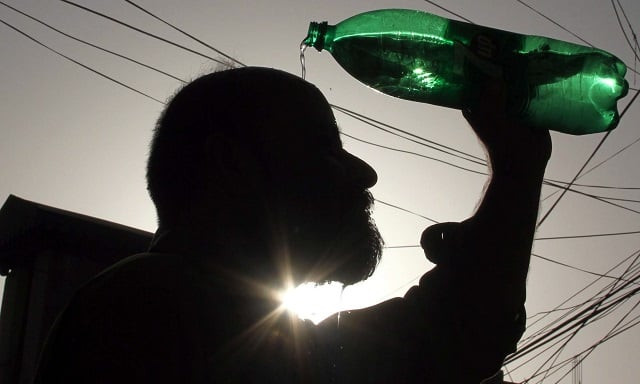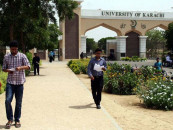Pakistan Met Office's heatwave warning centre to start working on April 1
People's fear of recurrence of 2015 summer tragedy is largely unfounded, says Met official

PHOTO: PPI
Pakistan Meteorological Department (PMD) Chief Meteorologist Abdul Rasheed said on Friday that these measures were adopted in 2016 to avert the crisis like the one witnessed in the summer of 2015 in which many people lost their lives. "Due to the low pressure in the Arabian Sea hampering routine sea breeze for no less than five consecutive days in the month of June, when temperature as a routine exceeds 40 degrees centigrade, we will come across real tough weather," said the senior expert.
'2019 will be the hottest year since 2015'
He emphasised that there was no need to panic about the approaching summer season and added that they had witnessed a delayed onset and prolonged winters in the metropolis. He shared that According to the weather charts for the past five years, temperatures rise from mid-March, ranging from 35 to 36 degrees centigrade. He added, "The fact that temperature may further surge to 38 to 40 degrees in April and get hotter in May and June, is the pattern witnessed since 2015".
The early warning system is a major development in this regard as it keeps related authorities, institutions and the general public updated about the heat intensity through the timely forecast. Rasheed said that it was the first of Ramazan in June 2015 when severe heatwave struck Karachiites and they were exposed to 'urban heat island' phenomenon previously little known to them. The frequent power breakdowns along with dehydration due to fasting led to the loss of so many lives.
Rasheed said, "It was due to these conditions along with high level of humidity that temperatures ranging between 40 to 44 degrees gave a feel of 52 to 55 degrees centigrade". He added that the fear of people based on the repetition of the tragic episode of 2015 was largely unfounded.
Acknowledging that nothing definite could be said, the expert was of the opinion that "heat island effect" was only possible if the sea breeze is hampered which would lead to an increase in humidity levels. The meteorologist said that there were always chances that winds may blow from south-east to south-west meaning that instead of regular sea breeze, gusts from deserts take place. He added that since 2016, necessary precautionary measures are being adopted well in time by all stakeholders, including PMD, national and provincial disaster management authorities, health and emergency departments, hospitals, public utilities, non-governmental organisations and even general public to prevent heat stroke-induced injuries that could prove fatal.
As world sounds alarms, Sindh hits snooze on climate change
He further said, "Since Ramazan is just five weeks away I will appeal to the people not to unnecessarily expose themselves to heat and to stop their children from playing cricket after Sehri". Appreciating the gesture of mosques opening their doors for hawkers and labourers, who are forced to work under the sun, to take much needed afternoon siesta during Ramazan, he suggested that this practice be continued during other hot days too.



















COMMENTS
Comments are moderated and generally will be posted if they are on-topic and not abusive.
For more information, please see our Comments FAQ